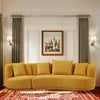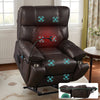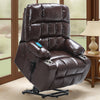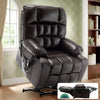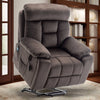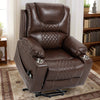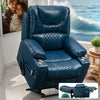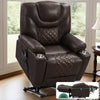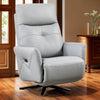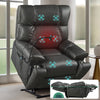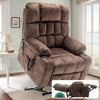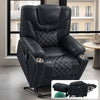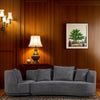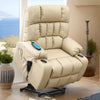Introduction to Modern Sofa Trends in the U.S.
The Evolution of Sofa Design
The design of sofas has witnessed significant transformations over the years. In the U.S., these changes reflect a blend of cultural shifts and technological advancements. Initially, functional forms dominated with stiff, upright sitting for formal occasions. As lifestyles became more relaxed, so did sofa designs, moving towards comfort and casual living. The mid-century modern era brought clean lines and minimalistic styles, while recent decades have introduced modular and multi-functional pieces that cater to the dynamic needs of modern households. Today, modern sofas not only serve as seating arrangements but also act as the centerpiece of living spaces, aesthetically and functionally adapting to the sprawling American home. This evolution mirrors broader trends in interior design, showcasing how functionality and style evolve together to redefine comfort in American homes.
Key Factors Influencing Sofa Trends
Several key factors are shaping the latest trends in modern sofa designs across the United States. Changes in lifestyle and technology have a significant influence. People are seeking more comfort and versatility in their living spaces. As a result, multipurpose sofas with adaptable configurations are increasingly favored. The growth of home entertainment has spurred the demand for big reclining chairs, offering a cinema-like experience. Urban living and smaller living spaces have also led to the popularity of space-saving and minimalist designs. Additionally, the rise of social media and home decor influencers has made aesthetic appeal and Instagram-worthy layouts more important than ever. Eco-consciousness is driving a trend towards sustainable materials and ethical manufacturing processes. Lastly, global influences have brought a diverse range of styles and cultural designs into the forefront of sofa trends.
The Rise of Big Reclining Chairs
Features of Big Reclining Chairs
Big reclining chairs have become a key player in modern home furnishings due to their outstanding features. Designed to offer supreme comfort, these chairs often come with a variety of adjustments to suit individual needs. They typically include backrests that lean back, plush cushions, and extendable footrests that allow users to find the perfect position for relaxation. Many models also boast built-in massage systems, heating pads, and convenient side pockets to store remote controls or magazines. The larger seat width not only provides extra space for stretching out but also makes them an ideal choice for all body types. Even the armrests and headrests are padded, emphasizing comfort in every aspect. Unlike traditional chairs, the cutting-edge designs of these recliners often integrate sleek lines and contemporary elements, making them not only a restful retreat but also a stylish statement piece in any living space.
Why Big Reclining Chairs are Gaining Popularity
Big reclining chairs have seen a surge in popularity for several reasons. First, there's an increasing demand for comfort in living spaces. People are spending more time at home and want furniture that supports relaxation and well-being. These chairs often feature plush cushioning and support for the entire body, making them a favorite for lounging and unwinding. Additionally, the versatility of these chairs, some of which offer customizable reclining angles and built-in amenities like cup holders or storage pockets, appeals to the modern consumer. They are also seen as a smart investment; larger chairs tend to be more durable and are capable of accommodating a variety of body types and sizes. The aesthetic appeal hasn't been ignored either—contemporary designs have streamlined big reclining chairs to fit seamlessly into modern interior decor, challenging the notion that comfort must come at the cost of style.
The Fusion of Comfort and Style
Balancing Aesthetics with Ergonomics
The modern sofa is not just a piece of furniture for sitting, it represents a blend of visual appeal and supportive design. This harmonious balance of aesthetics with ergonomics should provide not only a stylish focal point for any living space but also offer consistent comfort for daily use. Designers are mindful to create sofas that provide necessary lumbar support and feature adjustable elements to cater to various body types. At the same time, they are employing sleek lines, eye-catching forms, and minimalist aesthetics to meet the current demand for chic yet functional furniture. Materials commonly used in these pieces reflect both durability and comfort, such as memory foam cushions or leather finishes that mold to the user’s shape over time. Ultimately, the modern sofa is evolving into a sophisticated fusion of art and science, enhancing the living environment both visually and physically.
Materials and Textures in Trendsetting Sofas
Recent sofa designs are not only about visual appeal but also about the tactile experience. The materials and textures used in trendsetting sofas play a pivotal role in blending comfort with style. We're seeing an increase in the use of luxurious fabrics like soft velvets and durable microfibers, which provide both comfort and a touch of elegance. Natural materials like leather are also being revitalized with new tanning processes to offer a more supple and inviting feel. In terms of texture, designers are turning to tufting, quilting, and intricate stitching details to add depth and character to sofa surfaces. These elements contribute to the sensory experience of a sofa, making it not just a piece of furniture but a centerpiece of home comfort and style.
Color Trends in Modern Sofas
Popular Color Palettes for Sofas
Modern sofas are not just about comfort and design, but also about color - a key element that shapes the mood and style of living spaces. Nowadays, certain color palettes stand out in the realm of modern sofas. Neutral tones remain a classic, offering versatile options that blend seamlessly into various decors. These include shades of gray, beige, and off-white. In recent years, there's been an inclination towards bolder hues, such as deep blues, rich greens, and even matte blacks, providing a strong statement piece in minimalist or maximalist settings. For those seeking a bit of warmth, terracotta and rust colors create a cozy and inviting atmosphere. On the trendier side, pastel colors like soft pinks and light blues are becoming popular, reflecting a nod to the mid-century modern aesthetic that favors both subtlety and nostalgia. Overall, these popular color palettes for sofas reflect a desire for both timeless elegance and contemporary flair.
Psychological Impact of Color in Furniture Design
Color plays a crucial role in the world of furniture design, especially when it comes to selecting sofas. The colors chosen for a sofa can significantly affect the mood and atmosphere of a space. Darker hues, like navy or charcoal, often contribute to a feeling of sophistication and can anchor a room, while lighter colors, such as pastels, can introduce a sense of calm and openness. Vibrant colors like red or yellow can energize a space, infusing it with life and personality. Notably, psychologists suggest that color choices in furniture can reflect the homeowner's personality and influence their state of mind. For example, blue is associated with tranquility and may promote relaxation, making it a great choice for a lounge area where comfort is paramount. When designing or purchasing a sofa, considering the psychological impact of color can guide individuals to make choices that not only complement the room's decor but also enhance the well-being of those using the space.
Layouts and Configurations
Innovative Sofa Layouts for Modern Homes
Modern homes are increasingly showcasing innovative sofa layouts that push the boundaries of traditional living room design. One trend is the modular sofa—sections can be rearranged to fit any space or social setting. These pieces are not only versatile but often come with built-in storage, making them a practical choice for urban dwellers. Corner sofas are also favored, utilizing every inch of available space while creating a cozy nook for family gatherings. Another creative layout is the 'sofa with chaise', which blends the comfort of a big reclining chair with the sleekness of a contemporary sofa. This combination suits the modern desire for relaxation and style. Floating sofas, detached from walls and sometimes back-to-back, offer a bold statement, encouraging a fluid movement in the room and multiple focal points. These designs reflect a shift towards more adaptive and user-centered living spaces in today's homes.
Space Planning with Large Sofas
When integrating large sofas, especially big reclining chairs, into a living space, careful space planning is essential to maintain functionality without sacrificing style. Start by measuring the room and the furniture carefully to ensure a good fit. Consider the flow of traffic and the sofa's orientation for optimal viewing, whether it's towards a fireplace, a stunning view, or a television. Leave ample space around the sofa for movement and for accent pieces like side tables. For open-plan layouts, a large sofa can serve as a room divider, structuring spaces without using walls. Remember to also think vertically, using the height of the room for lighting elements or art that complements the sofa's presence without overwhelming the space. Furniture arrangement apps can be a useful tool to visualize the room before making any heavy lifting.
Emerging Technologies in Sofa Design
Smart Features in Modern Sofas
Modern sofas are not just about style and comfort anymore, they are getting smarter. With the integration of technology into furniture design, smart features in modern sofas are enhancing the user experience. Imagine controlling your sofa’s reclining angles, headrests, and even built-in massage options with a simple voice command or a tap on your smartphone. Some sofas come with USB ports and wireless charging pads, allowing you to charge your devices without having to leave your cozy spot. Others offer ambient lighting or built-in speakers for an immersive entertainment experience. These innovative additions not only provide convenience but also appeal to the tech-savvy consumer looking for a modern touch in home furnishings.
The Impact of Technology on Furniture Comfort
Embracing technology has dramatically enriched the comfort of modern sofas. Innovations in this space are about more than just gadgetry; they aim to enhance the user experience. For instance, built-in heating and massaging features now transform reclining chairs into personal wellness retreats, providing targeted relief and relaxation after long days. Adjustable firmness settings and power-lumbar support systems support optimal posture and comfort to individual needs. Moreover, smart recliners can sync with home systems, allowing users to control lighting or entertainment devices without the need to get up. This integration of technology in furniture design not only delivers unparalleled comfort but also aligns with a lifestyle where efficiency and ease are highly valued.
Sustainable and Eco-Friendly Sofas
Materials for the Environmentally Conscious Consumer
As more consumers prioritize the health of our planet, materials used in furniture production are evolving. Eco-friendly sofas are made from sustainable materials such as recycled fabrics, organic cotton, or bamboo. These materials are gentle on the environment because they require less water and energy to produce, and they often come from renewable sources. Organic cotton, for instance, is grown without harmful pesticides, reducing its ecological footprint. Bamboo is rapidly renewable and can be turned into a soft, durable fabric for upholstery. Additionally, some manufacturers are using reclaimed wood for sofa frames, reducing the need for new lumber and giving a second life to wood with history. Every material choice reflects a commitment to sustainability, and consumers can rest easy on their sofa knowing they are making a positive impact on the environment.
The Role of Sustainability in Furniture Design
Sustainability has become a cornerstone of modern furniture design, reflecting consumers' growing eco-consciousness. In the realm of sofa production, this translates into adopting practices and materials that minimize environmental impacts. Sustainable furniture design involves the use of recycled materials, sustainable wood sourced from responsibly managed forests, non-toxic finishes and adhesives, and the adoption of fair trade principles. Designers are focusing on sofas that offer longevity, reducing the need for frequent replacement and thus limiting waste. Additionally, many manufacturers are embracing circular economy methods, wherein sofas are designed for easy disassembly and recycling at the end of their life cycle. Such initiatives ensure that sustainability is not just a trend but becomes embedded in the ethos of furniture design, benefiting both the planet and the industry.
Buying Guide for Trendsetting Sofas
Criteria to Consider When Purchasing a Modern Sofa
When you're ready to invest in a modern sofa, there are several factors you should take into account to find the right fit for your home and lifestyle. Here's a quick guide to help you make an informed decision:
- Comfort and Size: Make sure the sofa fits comfortably in your living space and offers enough seating for your needs. Consider the depth and height of the seat, as well as the firmness of the cushions.
- Style and Design: Look for a sofa that complements the rest of your decor. Whether you prefer a minimalist look or a more eclectic vibe, the design should align with your personal aesthetic.
- Materials and Durability: Pay attention to the quality of the materials used. Fabrics should be durable and easy to clean, while the frame should be sturdy to ensure longevity.
- Functionality: If you're considering a recliner or a sofa with additional features like convertible beds or storage, think about how these functions will serve you daily.
- Budget: Determine a budget beforehand and stick to it. Remember that a higher price doesn't always guarantee better quality, so research and compare options.
- Brand Reputation: Look into the brand's reputation for quality and customer service. Reading reviews and asking for recommendations can give you a better idea of what to expect.
By considering these criteria, you'll be more likely to find a modern sofa that not only looks great but also meets your practical needs.
The Intersection of Quality, Cost, and Design
When hunting for a trendsetting sofa, the nexus of quality, cost, and design becomes critical. High-quality sofas offer durability and comfort but may come with a steeper price tag. On the other side, cost-effective options can be tempting but might not endure the daily wear and tear. The ideal choice marries sturdy construction with a price that fits your budget, all while reflecting your personal style. A sofa's design should complement the room it's in, and current trends often offer a blend of contemporary aesthetics with functional features. Consider sofas that strike this delicate balance to ensure a smart, long-lasting purchase that enhances your living space.
Conclusion
The Future of Sofa Design in the United States
Looking ahead, the future of sofa design in the United States appears to be driven by innovation and tailored comfort. Advances in materials and technology promise to introduce smarter, more adaptive seating options that cater to our ever-changing lifestyles. From sofas equipped with integrated technology for ease of use to modifiable designs that fit into any room, the possibilities are vast. Expect to see eco-friendly materials gaining traction, as well as a continued emphasis on individual style expression through customization. The American home is set for a revolution in relaxation as sofas become not just furniture, but a dynamic component of living spaces.
Summary of Current Sofa Trends
As we wrap up this exploration of contemporary sofa design in the United States, it's clear that the trends are leaning towards a blend of comfort, aesthetics, and innovation. Currently, big reclining chairs are commanding attention for their plush comfort and functional design. These expansive pieces not only offer superior relaxation but also add a touch of modern flair to any living space. In color choices, we see a shift towards bold and earthy palettes that bring warmth and character. Sofas are increasingly being chosen to make a statement with vibrant hues or to harmonize with minimalist decors. The fusion of comfort with style is evident in the ergonomic designs that don't sacrifice visual appeal, incorporating advanced materials and textures that appeal to both the touch and the eye. Moreover, technology is making its mark with smart features integrated into sofas, enhancing user experience and comfort. And importantly, sustainability has become a priority, with eco-friendly materials growing in popularity among consumers who value environmental responsibility. As we look forward, it's an exciting time for sofa design, with these trends shaping the way we think about comfort, style, and functionality in our living spaces.







